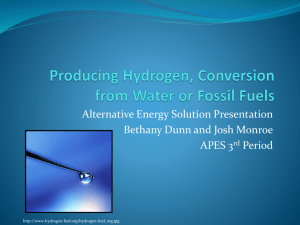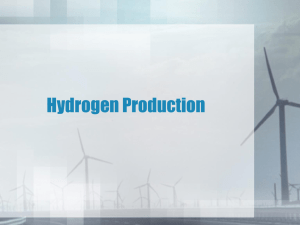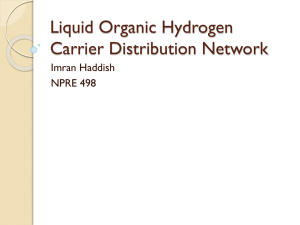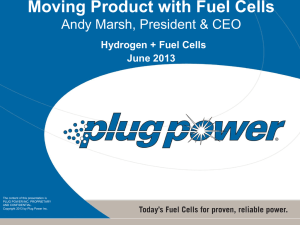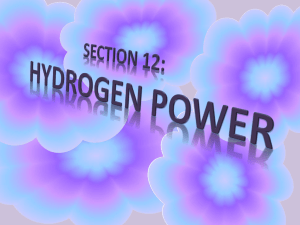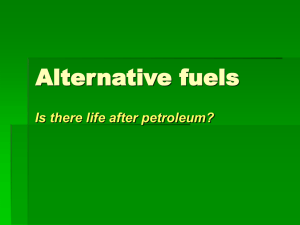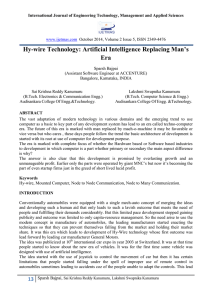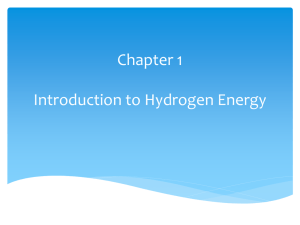HY-WIRE CAR (2) - 123SeminarsOnly
advertisement
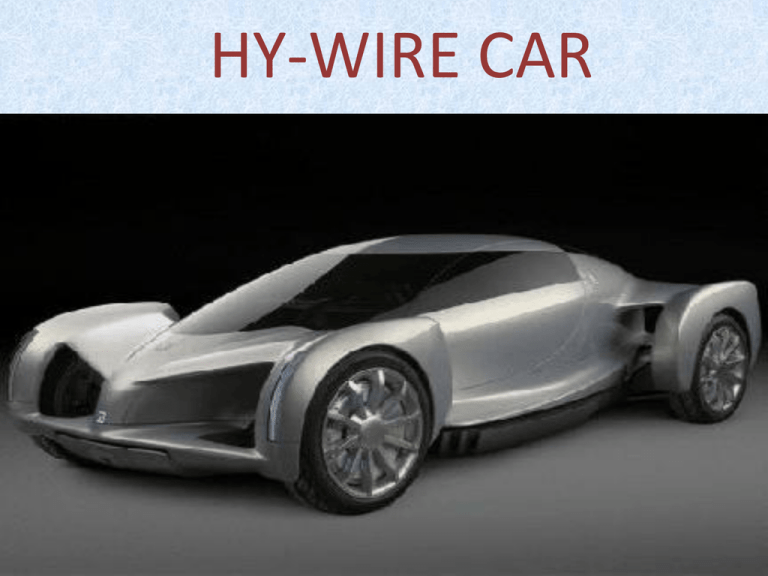
HY-WIRE CAR Abstract In this we describe about car that runs on Hydrogen. We give in Hydrogen as source of fuel for running the vehicle. The technology used in this is “WIRE” systems. All the mechanical links we find in our daily car are eliminated. So its named as “HY-WIRE” car. In this car we doesn’t see gases as exhaust but water, it’s the only exhaust we get. Introduction This concept of car was developed in General Motors an US automobile company. Its shape is just like an skateboard as it doesn’t have any body it consists only of chassis. All the systems of the car are kept under the chassis which is only 11inch in thick. A computer is kept under the chassis which controls the system of the car. Due to the concept of WIRE systems we doesn’t find any mechanical and hydraulic linkages. Chassis of Skateboard Parts in Chassis • Fuel cell stack • By-wire system • Hydrogen storage tank • Wheel hub motor • Lithium-ion battery • Front electric motor Design • Due to hydrogen fuel cell drive system used by the Hy-wire, the conventional car layout has been revamped. • Without the need for a conventional engine block and transmission system coupled to the steering column and pedals through mechanical linkage the car's power system and single electric motor are built into a flat skateboard configuration. • Because all propulsion and energy storage systems are housed in the skateboard, designers are free to arrange the passenger compartment however they see fit. • The skateboard itself contains crumple zones similar to those in conventional automobiles. Control unit of Vehicle • In the control unit of the vehicle we have an computer arranged under the chassis of the vehicle. • This computer controls the speed of the vehicle. • There is connection between the parts and computer using wire system. • There are LCD screens in front of the driver as they show the road in front and behind the vehicle. Car detail • • • • • • • • • • • • • engine position power bhp/weight torque driven wheels Skateboard steering weight wheelbase transmission gear ratios final drive top speed Three-Phase Electric Front Transverse 60 kw / 80.5 bhp @ 12000 rpm 42.41 bhp per tonne 215 nm / 158.6 ft lbs @ 12000 rpm Steel & Fibreglass over Aluminium Steer By-Wire 1898 kg / 4184 lbs 3114 mm / 122.6 in One Speed 1.00:1, :1 8.67:1 160.9 kph / 100.0 mph Power generation • The basic idea is to use a catalyst to split a hydrogen molecule (H2) into two H protons and two electrons (e-). • Oxygen on the cathode side of the fuel cell draws H+ ions from the anode side through a proton exchange membrane, but blocks the flow of electrons. • The electrons are attracted to the protons on the other side of the membrane, but they have to move through the electrical circuit to get there. • The moving electrons make up the electrical current that powers the various loads in the circuit, such as motors and the computer system. • On the cathode side of the cell, the hydrogen, oxygen and free electrons combine to form water (H2O), the system's only emission product. Working • On generation of electricity the motor which are fixed at the front and back starts. • The wheel hub motor which is fixed to the wheels of the vehicle starts. • The steering of the vehicle is connected to the computer of the vehicle by wire which transmits signals regarding speed and braking of vehicle. • There are two grips provided on the steering which accelerates and decelerates the vehicle. Advantages of the hydrogen economy The elimination of pollution caused by fossil fuels - When hydrogen is used in a fuel cell to create power, it is a completely clean technology. The only by product is water. There are also no environmental dangers like oil spills to worry about with hydrogen. The elimination of greenhouse gases - If the hydrogen comes from the electrolysis of water, then hydrogen adds no greenhouse gases to the environment. There is a perfect cycle -- electrolysis produces hydrogen from water, and the hydrogen recombines with oxygen to create water and power in a fuel cell. The elimination of economic dependence - The elimination of oil means no dependence on the Middle East and its oil reserves. Distributed production - Hydrogen can be produced anywhere that you have electricity and water. People can even produce it in their homes with relatively simple technology. Technological Hurdles • The big question with the hydrogen economy is, "Where does the hydrogen come from?" After that comes the question of transporting, distributing and storing hydrogen. Hydrogen tends to be bulky and tricky in its natural gaseous form.


